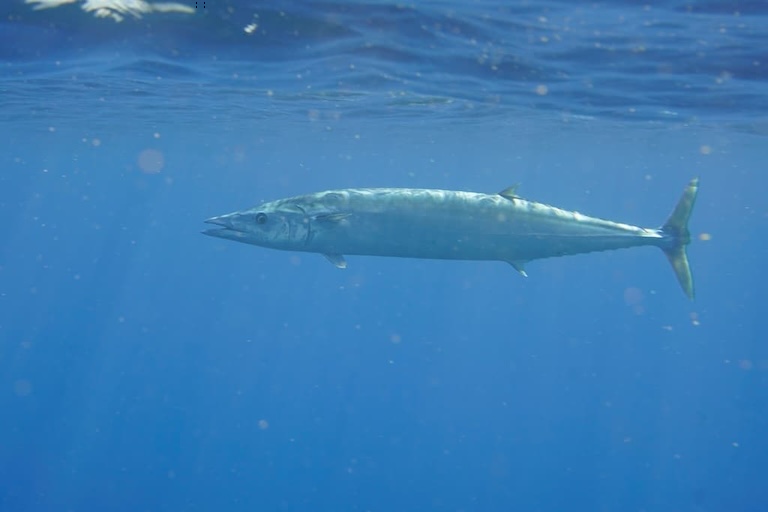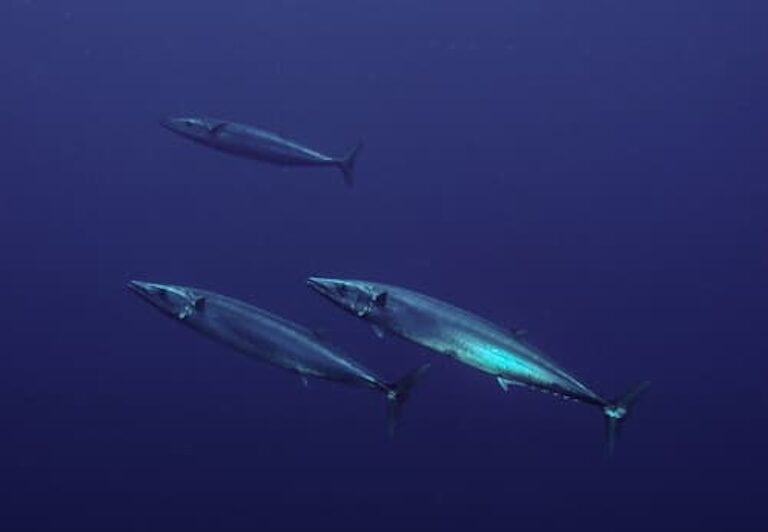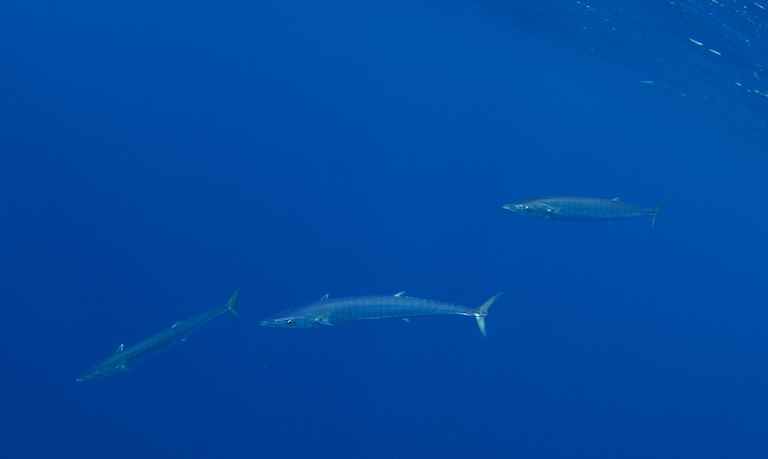Wahoo! Profile
The ocean is home to some of the most relaxed creatures on Earth. A lumbering sea turtle cares little for the rat race; a blue whale can float about, safe in the knowledge it’s the biggest animal to have ever lived. A Nomura jellyfish goes wherever the current takes it, and the giant grouper will slowly pull up to a diver out of gentle curiosity.
Then, there are the animals who are always in a hurry. The shoaling prey items, desperately trying to not be the one who gets eaten, or the predators evolved to catch them. Of the latter, there’s one who embodies speed as not only a mode of feeding but also a personal philosophy.
A fish whose name should never be written without an exclamation mark: the Wahoo!

Wahoo! Facts Overview
| Habitat: | Marine waters, mostly tropical, above 200 meters |
| Location: | Atlantic, Pacific, and Indian Oceans |
| Lifespan: | 5-6 years |
| Size: | Up to 2.5 m (8 ft 2 in) |
| Weight: | up to 83 kg (183 lb) |
| Colour: | Silvery/steel blue |
| Diet: | Other fish and squid |
| Predators: | Sharks, billfishes |
| Top Speed: | Possibly up to 75 km/h (46 mph) |
| No. of Species: | 1 |
| Conservation Status: | Least Concern |
These fish are named after arrows, and this is pretty appropriate. Elongated, sharp-tipped, fast-moving animals that speed through the ocean both in terms of locomotion and lifestyle.
The Wahoo! Is a live fast, die young kind of fish, and everything about it is built for speed: rapid reproduction, tremendous growth spurts, powerful acceleration, and widespread dispersal make this one of the most resilient species in the ocean.
Interesting Wahoo! Facts
1. Wooden arrows
Wahoo! Are Scombrids. This means they share a family with some of the tightest, most powerful sprinters in the fishy universe. Mackerel and tuna are members of this athletic family; rigid, muscular fish with typically symmetrical caudal fins designed for bolting forward at an alarming rate.
At the other end of a scombrid is usually a face full of killing teeth, and the wahoo! is no exception to this. Its teeth are similar to large mackerel species, but closer together, and razor sharp. This fish is often mistaken for the much uglier yet equally intimidating barracuda, but they are unrelated.
The Siouan language is thought to be the origin of its name, with the word “Oahu” or “Wahoo,” meaning “Wooden arrow”. And the arrow part is right, this fish backs up its name with pure party energy.

2. They’re fast
As with all information primarily gathered from fishermen, the true speed of the wahoo! is commonly exaggerated to the point of pure nonsense, but chances are this fish is capable of short bursts of around 65-75 km/h (40-47 mph) as long as it can handle the damage from cavitation.
It’s said to be similar in speed to the much larger and more powerful yellowfin tuna, another top predator. 1 2
3. They get around
This speed takes the wahoo! all over the place, and this fish is one of the few animals to have a globally distributed population as a single species.
It’s thought that the fish disperses at every life stage, and this makes it one of the most successfully spread vertebrates in the world. 3
 4. They are prolific
4. They are prolific
The wahoo! breeds by releasing an enormous amount of eggs into the water. This is quite common in fish and is known as broadcast spawning. At the same time as the egg release, males release a corresponding fog of sperm to fertilise them.
Adults can reproduce like this several times a year and a single female can produce a million eggs in this time.
And the moment they hatch, they get straight to work. 4
5. Live fast, die young
But all this speed catches up to the party animal. They grow exceptionally fast, getting to a large size in the first year; this is quicker than any other Scombrid, and are sexually mature within 12 months, some as little as 7 months old.
The flip side of this is that they only live for around 5-6 years, with some exceptions touching on a decade. 5
6. Their solitary nature helps them
Wahoo! are popular with sport fishermen and the seafood industry too. But they tend not to gather together in large numbers, so they’re less likely to all be swept up in a big net.
This solitary nature means that while they’re still caught on longlines and similar fishing apparatus, their numbers aren’t as threatened as those fish who cluster and end up in nets.
Still, they do come up as bycatch a lot, and artisanal fisheries have limited reporting accuracy, so the threat isn’t entirely clear.
7. They appear to be doing fine
With their fantastic rate of reproduction, fast growth rates and incredible dispersion, these fish have avoided much of the struggle faced by the majority of marine species in the face of overwhelming depletion of our oceans.
Even their genetic connectivity between oceans looks healthy since they move around and spread their genes all over the place.
This is therefore one of the most stable and successful fish populations in the world and is listed as of Least Concern to the IUCN.
Still, as predators, they are only as successful as their prey, so conservation needs to focus on maintaining a healthy food source for these fish.
Wahoo! Fact-File Summary
Scientific Classification
| Kingdom: | Animalia |
| Phylum: | Chordata |
| Class: | Actinopterygii |
| Order: | Scombriiformes |
| Family: | Scombridae |
| Genus: | Acanthocybium |
| Species: | solandri |
Fact Sources & References
- “Wahoo”, Florida Museum.
- Brill, R. (1979), “Effect of temperature on isotonic twitch of white muscle and predicted maximum swimming speeds of skipjack tuna, Katsuwonus pelamis”, Sci Hub.
- T. C. THEISEN (2008), “High connectivity on a global scale in the pelagic wahoo, Acanthocybium solandri (tuna family Scombridae)”, Wiley Online Library.
- “Wahoo Fish”, Guidesly.
- “Wahoo”, IUCN Red List.

 4. They are prolific
4. They are prolific